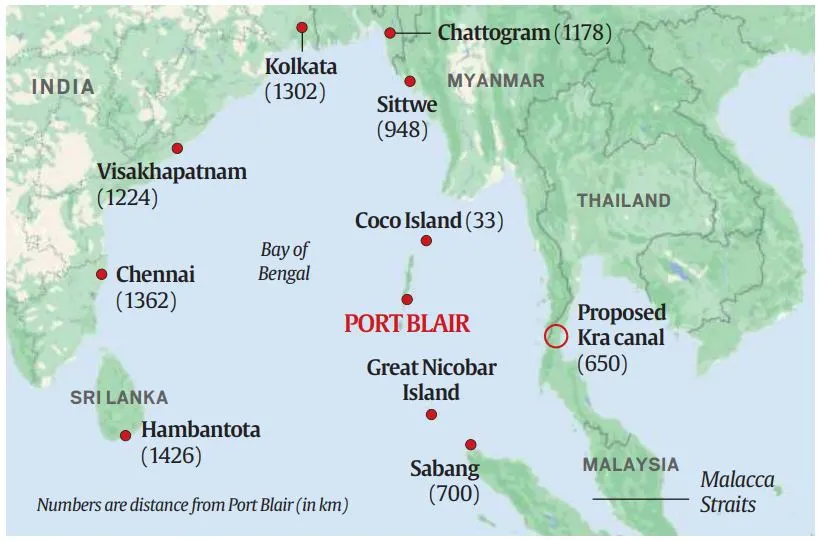Table of Contents
Hydrocarbons
Context: Hydrocarbons significantly impact the environment through CO2 emissions. Emissions occur throughout the hydrocarbon lifecycle (production, use, well abandonment)
| Fact |
| A 2018 study estimated oilfields releasing 1.7 billion tonnes of carbon dioxide in one year. |
How Hydrocarbons Are Formed and Extracted?
- Formation: Over millions of years, heat and pressure compress dead organic matter into hydrocarbons trapped in rock formations.
- Location:
- Hydrocarbons are found underground in reservoirs formed by layers of rock.
- Petroleum geologists assess these rocks for porosity (holding capacity) and permeability (ease of flow).
- The source of hydrocarbons is kerogen (organic matter) from lakes, oceans, or landmasses.
- Kerogen type determines the kind of hydrocarbon formed (oil, gas, coal).
- Extraction:
- Drilling and reservoir engineers aim to extract hydrocarbons efficiently without damaging the reservoir.
- A production well is drilled to maximise drainage. The well uses a drill bit, drill pipe, and drill collars.
- Steel casings and cement lining protect the well from collapsing and fluids entering.
- Drilling fluid cools the drill bit and carries rock cuttings to the surface.
- Blowout preventers control pressure and prevent uncontrolled eruptions.
- Mud-logging records rock cuttings by depth to study their properties.
- Drilling rigs can be used offshore on platforms.
- Well Completion and Production:
- Once drilled, the well is completed by removing the drill string and perforating the casing.
- Ideally, natural pressure pushes hydrocarbons to the surface through a narrower tube.
- If pressure is low, pump jacks or other methods lift hydrocarbons.
- Older wells may require workovers to maintain or improve production.
- Production Phases:
- Primary phase relies on natural pressure differences and buoyancy.
- Secondary phase uses injected water or diluents to maintain pressure and flow.
- Tertiary phase uses enhanced recovery methods like steam injection to extract remaining hydrocarbons.
- A well might yield around 15% each in primary, secondary, and tertiary phases.
- Well Abandonment and Decommissioning:
- Extraction ends before a well is completely depleted, often due to economic reasons.
- Abandoned wells are plugged to prevent contents from escaping. Plugs can be temporary or permanent.
- Improperly plugged wells are a major source of methane emissions.
- Decommissioning a well is expensive and not always commercially viable.
Wholesale Price Index (WPI)
Context: Wholesale price inflation rose to a 3-month high of 0.53% in March 2024, compared to 0.2% in February 2024.
More in News
Food Price Spike: The increase was driven by a rise in the food price index (4.65%), particularly:
- Cereals (9.04%): Highest 12-month increase
- Paddy (11.7%)
- Potato (53%)
- Onions (57%)
Pulses & Vegetables Remain High: Inflation in pulses (17.2%) and vegetables (19.5%) stayed elevated.
Fuel & Manufactured Goods Still Deflating: Prices of fuel and manufactured products continued to decline, though at a slower rate (around -0.8% each).
First Monthly Increase in 4 Months: Month-on-month, WPI rose 0.4% (first increase since November 2023).
Mixed Picture Within Food:
- Eggs, meat, and fish prices decreased (1.86%).
- Milk inflation eased (4.7%) but wheat prices rose sharply (7.43%).
Full Year Deflation: Despite the March rise, wholesale prices remained negative for the entire year (average -0.7%).
Concerns for the Future:
- Rising international commodity prices
- Potential increase in crude oil prices
- Impact of heatwaves on electricity demand
- Continued vegetable inflation
A&N Islands’ – Strategic importance
Context:
- India’s Look East policy has shifted to a more proactive Act East policy.
- Recognition of the importance of naval power and China’s growing navy has led to a focus on developing India’s island territories.
- The Andaman and Nicobar Islands (A&N Islands) are a strategically vital group of islands due to their location.
Strategic Importance of A&N Islands
- Location:
- 700 nautical miles southeast of mainland India.
- Less than a day’s steaming from the Malacca Strait (key waterway connecting Indian & Pacific Oceans).
- Close proximity to Myanmar, Thailand, Indonesia, and Bangladesh.
- Potential location for the mouth of a future Kra Canal connecting the Gulf of Thailand with the Andaman Sea.

- Role in Maritime Security:
- A&N Islands offer a vantage point for monitoring the Bay of Bengal.
- They can be the “first line of offence” against threats from the East.
- The Andaman and Nicobar Command (ANC) is a tri-services military command established in 2001.
Reasons for Slow Development of Strategic Infrastructure
- Delayed recognition of the islands’ strategic importance.
- Distance from the mainland and infrastructure challenges.
- Complexities of environmental clearances and land acquisition.
- Multi-agency coordination issues for large-scale development projects.
- Prioritisation of short-term political gains over long-term strategic vision.
Focus Areas for Strategic Infrastructure Development
- Maritime Security:
- Surveillance of the vast area around the islands.
- Securing all islands against occupation or illegal activities.
- Deterrence: Establish a strong deterrent against potential naval threats from the East.
- Economic Infrastructure: Develop infrastructure on the southern islands to boost maritime trade with Southeast Asia.
- Connectivity: Improve ease of travel within and between the islands to facilitate development and tourism.
- Self-Sufficiency: Reduce dependence on mainland India for supplies and services.
Specific Infrastructure Priorities
- Airfields: Separate airfields with long runways (suitable for Boeing 737s) in both north and south.
- Ports and Fuel Storage: Establish ports and fuel storage facilities in both island groups.
- Military Presence: Increase troop deployment and station the right mix of military assets at the ANC (surveillance aircraft, fighter jets).
- Galathea Bay (Great Nicobar Island) Transhipment Port: Expedite development for international and Indian shipping services.
- Transportation: Develop road networks, high-speed ferries, and a seaplane terminal.
- Faster Development: Utilise foreign materials and expertise for building weather-resistant and earthquake-proof infrastructure.
- Environmental Clearances: Streamline forest and environmental clearance processes for defence projects.
- Planned Habitation: Consider planned habitation of uninhabited islands with incentives for eco-friendly development.
- International Collaboration: Explore partnerships with Quad and Indo-Pacific Oceans Initiative (IPOI) for development assistance.
Climate Litigations
Context:
- The European Court of Human Rights ruled in favour of 2,000 Swiss women over the Swiss government’s inadequate climate change actions.
- This landmark ruling may set a precedent for European courts and encourage more communities to legally challenge their governments over climate change policies.
- The ruling coincides with India’s Supreme Court expanding citizens’ rights to include freedom from adverse effects of climate change.
Background
- A group of over 2,000 Swiss women above 64 (KlimaSeniorinnen Schweiz) sued the Swiss government in 2016.
- They argued the government’s weak climate policies violated their human rights under the European Convention on Human Rights.
- Their case focused on vulnerability to extreme heat as elderly women, referencing IPCC reports on health risks.
Court Ruling
- The European Court of Human Rights (ECHR) sided with the women.
- The court affirmed that Article 8 of the European Convention includes the right to state protection from serious climate change effects on individuals’ lives and well-being.
- Switzerland’s inadequate policies and failure to meet emission reduction goals breached this right.
- The ECHR cannot dictate specific policies but requires Switzerland to update its climate action plans.
Significance of the Ruling
- Sets a precedent for climate litigation in Europe (46 ECHR member states).
- National courts must consider this ruling in future climate and human rights cases.
- May encourage similar lawsuits in other ECHR member states.
- Reinforces the need for stronger climate action by governments.
Rise of Global Climate Litigation
- The Swiss case reflects a growing trend of climate lawsuits worldwide.
- As of December 2022, over 2,180 climate cases were filed globally.
- Diverse groups like youth, women, and indigenous communities are driving this trend.
- Recent examples include successful lawsuits against governments in Montana (US) and India (rejected).
Overall Impact
- The ECHR ruling is a major victory for climate activists and could lead to stricter climate policies in Europe.
- It highlights the increasing use of legal action to hold governments accountable for climate change.
Examples, Data and Case Studies For Value Addition
- Geography (GS 1): Mumbai’s Worli Koliwada will be the site for India’s second artificial reef installation, following Pondicherry, to enhance marine biodiversity.
- International Relation (GS 2): The Ministry of External Affairs (MEA) has approved a plan for India Ports Global Ltd (IPGL) to manage all operations at Sittwe port on Myanmar’s Kaladan River, marking India’s second international port venture following Chabahar Port.


 UDAN Scheme, Objectives, Funding and Ach...
UDAN Scheme, Objectives, Funding and Ach...
 Indus Water Treaty 1960 Suspended by Ind...
Indus Water Treaty 1960 Suspended by Ind...
 5 Years of SVAMITVA Scheme and Its Benef...
5 Years of SVAMITVA Scheme and Its Benef...





















